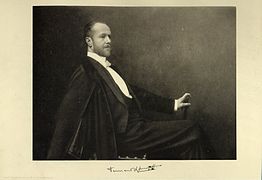Design
Design
Personality
Chart Properties
Your Cross represents the specific theme of your life. This cross embodies your unique potential & the lessons you're here to learn, providing a roadmap to fulfilling your life purpose.
We use the UTC birth time and date to do the calculations required to generate your Human Design chart.
Buy Tokens
Pay as you use, no expiry and no subscription required.Prompt Ideas
Get inspired with some epic prompt ideas.Elizabeth Barrett Browning's Biography
British poet in poor health who lived with her father. She was a 40-year old invalid spinster when she met and fell in love with six-year-younger poet Robert Browning. With their love and marriage in 1846, Browning wrote some of the most beautiful words in the English language in her “Sonnets From the Portuguese.”
Elizabeth’s father, Edward Barrett, came of a Creole family from Jamaica. He had been born to wealth and ease in a slave-owning family. Sent to England for his education, he fell in love at 19 with a suitable English girl, six years his senior. Elizabeth was the first born of 12 kids in 19 years, 11 of whom lived to adulthood.
Elizabeth was a small, fine-boned, dark haired child who was the tyrant of the nursery, imperious and high-tempered. Growing up in an elegant country estate with spacious, beautiful grounds, she loved the out-doors and roamed freely. At 15, she suffered a spinal injury when saddling her horse that caused severe recurring pain and muscle spasms.
She was also a talented linguist and poet, encouraged and admired by her parents; she was published by the time she was 14.
In 1827, when Elizabeth was 21, her mother died after a long illness. Her dad was having financial reversals and had the home mortgaged. Five years later, the mortgage was foreclosed. Her dad was crushed by the humiliation and had to find means of income. A year later, in 1833, England freed its slaves and that put additional stress on the Jamaican source of family wealth.
The family moved to a lesser home for the next three years, by the sea, then to a furnished house in London. In 1838 they settled in 51 Wimpole Street.
Elizabeth’s health was becoming more delicate and she was sent for three years to Torquay, the seaside, with one of her sisters attending her. She was diagnosed as not consumptive, though she had coughed up blood, and her treatment consisted of brandy and opium to relieve her pain.
As she became more invalided and reclusive, her literary reputation was growing, for both her poetry and criticism. Their possessive father forbade any of the children to marry and disowned the three who did so during his lifetime, Elizabeth, Henrietta and Alfred! When she began seeing Robert Browning, Elizabeth wrote to him that her father would never let her go, and if he realized their relationship, he would be barred from the house.
In admiration of each other’s work, the couple corresponded about poetry before they met. Robert first wrote to Elizabeth in January 1845 and called in person in May. They soon fell deeply in love, a magic that transformed Elizabeth from a captive to a rebel.
She left her sick bed, first learning to walk about her room then up and down stairs. When she ventured outdoors, she bought a new bonnet to celebrate. The lovers married secretly on 9/12/1846. A week later, she slipped out of the house with her maid, her dog and a small amount of luggage, eloping with Robert. They went to Paris and on to Italy, where they happily made their home at the Casa Guidi in Florence, both writing.
Elizabeth’s health improved for a while, and she had a son, but she was weakened by four miscarriages and her strength began to fail. After a stay in Rome, she returned to Florence with a cold, leading to bronchitis and a suspected abscess of the lung. On the morning of 6/29/1861, as Robert was feeding her consommé, he thought she seemed dazed. “Do you know me?” he asked. She kissed him repeatedly and told him how much she loved him. She died peacefully with a smile on her lips and her head against his shoulder. Her face was so composed that she looked like a young girl.
Her tombstone bears the disconcerting inscription, “Be not afraid, it is I.”
Link to Wikipedia biography
Elizabeth Barrett Browning
Your Cross represents the specific theme of your life. This cross embodies your unique potential & the lessons you're here to learn, providing a roadmap to fulfilling your life purpose.
We use the UTC birth time and date to do the calculations required to generate your Human Design chart.
Prompt Ideas
Get inspired with some epic prompt ideas.

Paul Kantner
5/1 Sacral Generator

Fernand Khnopff
3/5 Emotional - Solar Plexus Manifesting GeneratorS. Albert Kivinen
3/5 Sacral Manifesting Generator

Margaret Mead
2/4 Sacral GeneratorGuy Dupre
2/5 Emotional - Solar Plexus Manifesting Generator





